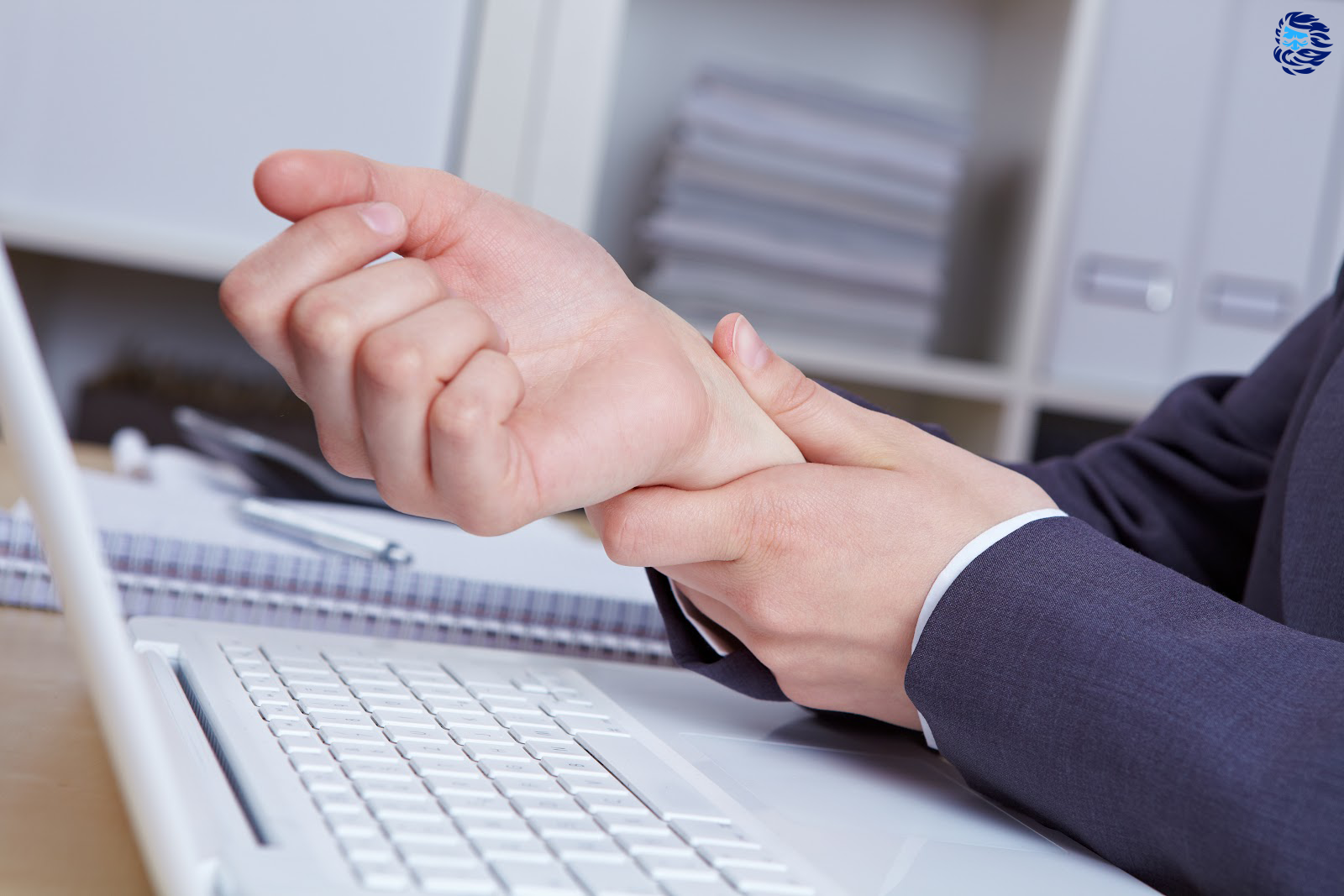
Along with computer visual syndrome, which we have already talked about earlier, another very serious ailment is common among IT specialists - carpal tunnel syndrome. What is the manifestation of this disease and is it possible to prevent its development? Let's figure it out.
First, let's define the terminology so that there will be no confusion in the future. Tunnel syndrome (or compression-ischemic neuropathy) is a set of clinical manifestations caused by compression or pinching of a nerve in a narrow anatomical space formed by dense structures, which are bones, tendons, ligaments or muscles.
The human body has a huge number of such places: 8 different tunnel syndromes can develop on one hand alone. Therefore, from a medical point of view , it is incorrect to call the carpal tunnel syndrome , which will be discussed in today's article, simply tunnel syndrome, without specifying the localization of the pathological process. Although it's fair to say what exactly Carpal tunnel syndrome (as neurologists call carpal tunnel syndrome ) is the most common form of compression-ischemic neuropathy of all existing: its total share in the population is about 5%, and the annual increase in the incidence reaches 3 cases per thousand of the population.
There are many reasons for carpal tunnel syndrome. The main factor provoking the appearance of this ailment in IT specialists is the compression of the median nerve in the place of its passage under the transverse ligament of the wrist, due to the incorrect position of the hand, monotonous motor skills and prolonged static load on the wrist joint, muscles and ligaments of the forearm and hand during prolonged work at computer.
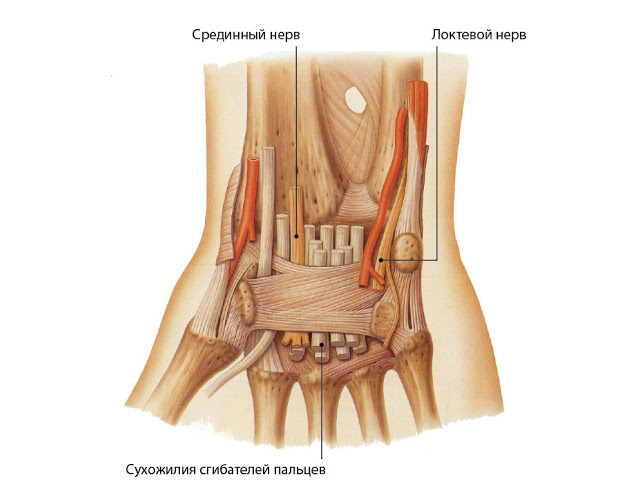
Compression of the median nerve is manifested by pain, a feeling of numbness, paresthesia (a violation of sensitivity, accompanied by the appearance of atypical sensations such as burning, itching, tingling, "creeping creeps", etc.), spreading to the palmar surface of the large, index, middle and half ring fingers, as well as the back of the index and middle fingers.
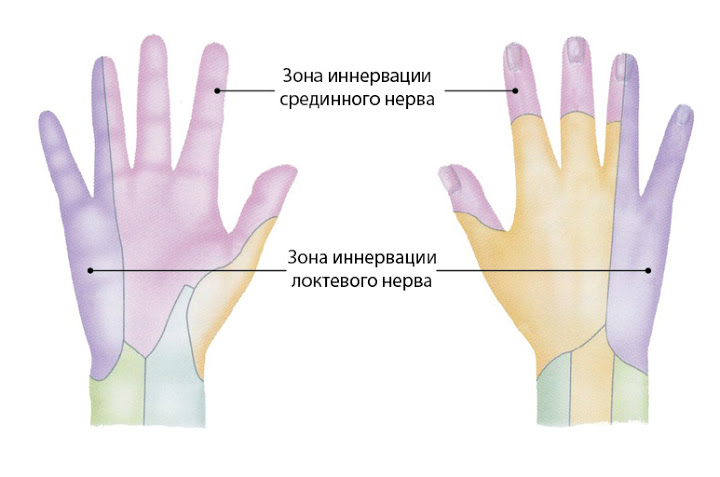
At the initial stages, the listed symptoms are manifested directly when performing actions that put a load on the hand. As the disease progresses, pain and paresthesias begin to appear at rest (as a rule, during sleep, which is due to the prolonged presence of the hand in the same position). If carpal tunnel syndrome is not treated, persistent loss of sensitivity will inevitably join the listed symptoms, and with advanced forms of the disease, atrophy of the hand muscles can be observed, which manifests itself in a gradual loss of dexterity and strength (it becomes more and more difficult for a person to perform fine motor skills and hold objects in his hand). passing into complete paralysis of I and II fingers, and a characteristic deformity of the hand (the so-called "monkey hand").
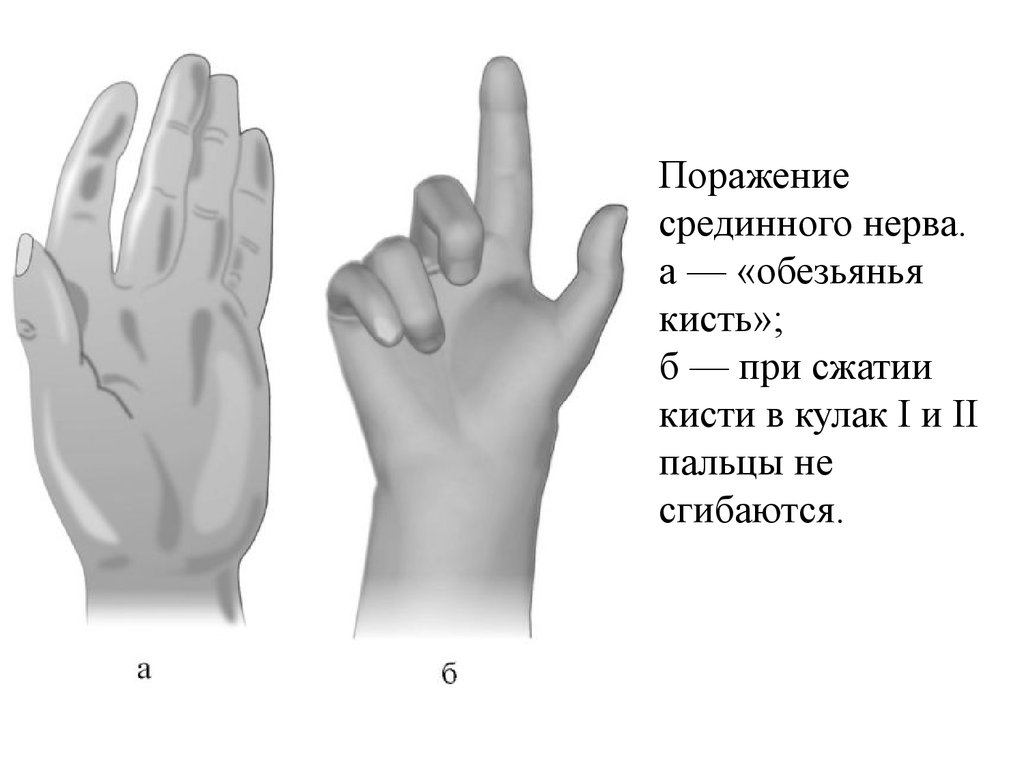
Self-diagnosis of carpal tunnel syndrome
The diagnosis of "carpal tunnel syndrome" is established on the basis of the characteristic clinical manifestations, which we described above. To confirm it, there are several simple tests that you can perform yourself.
Tinel's test
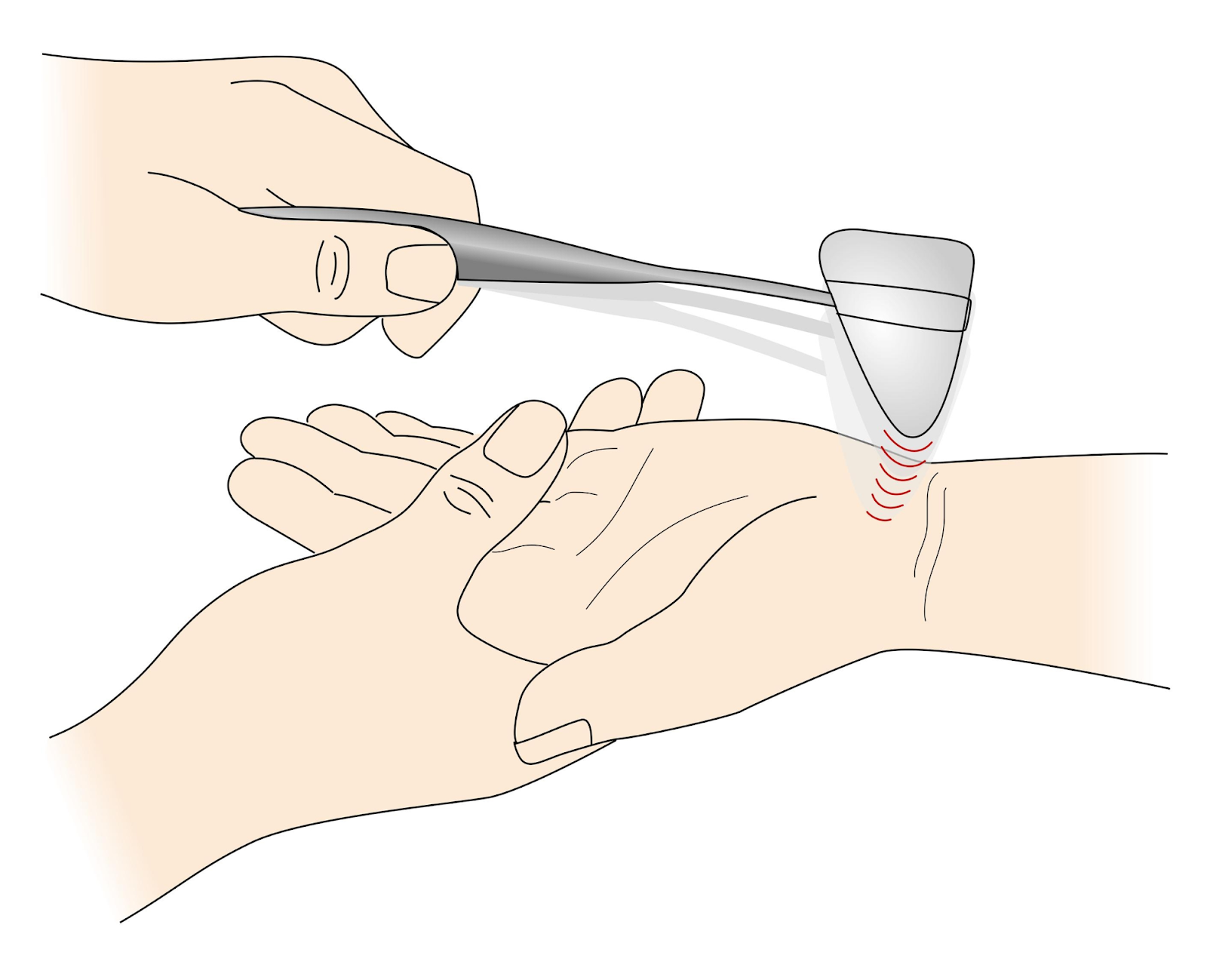
Tapping the wrist (performed with a neurological hammer, but at home you can use the middle and index fingers folded together) in the projection of the median nerve provokes an "electric shock", pain, or the appearance of a pronounced tingling sensation in I – III and half of IV fingers. Also, pain can occur in the tapping area itself.
Durcan's test
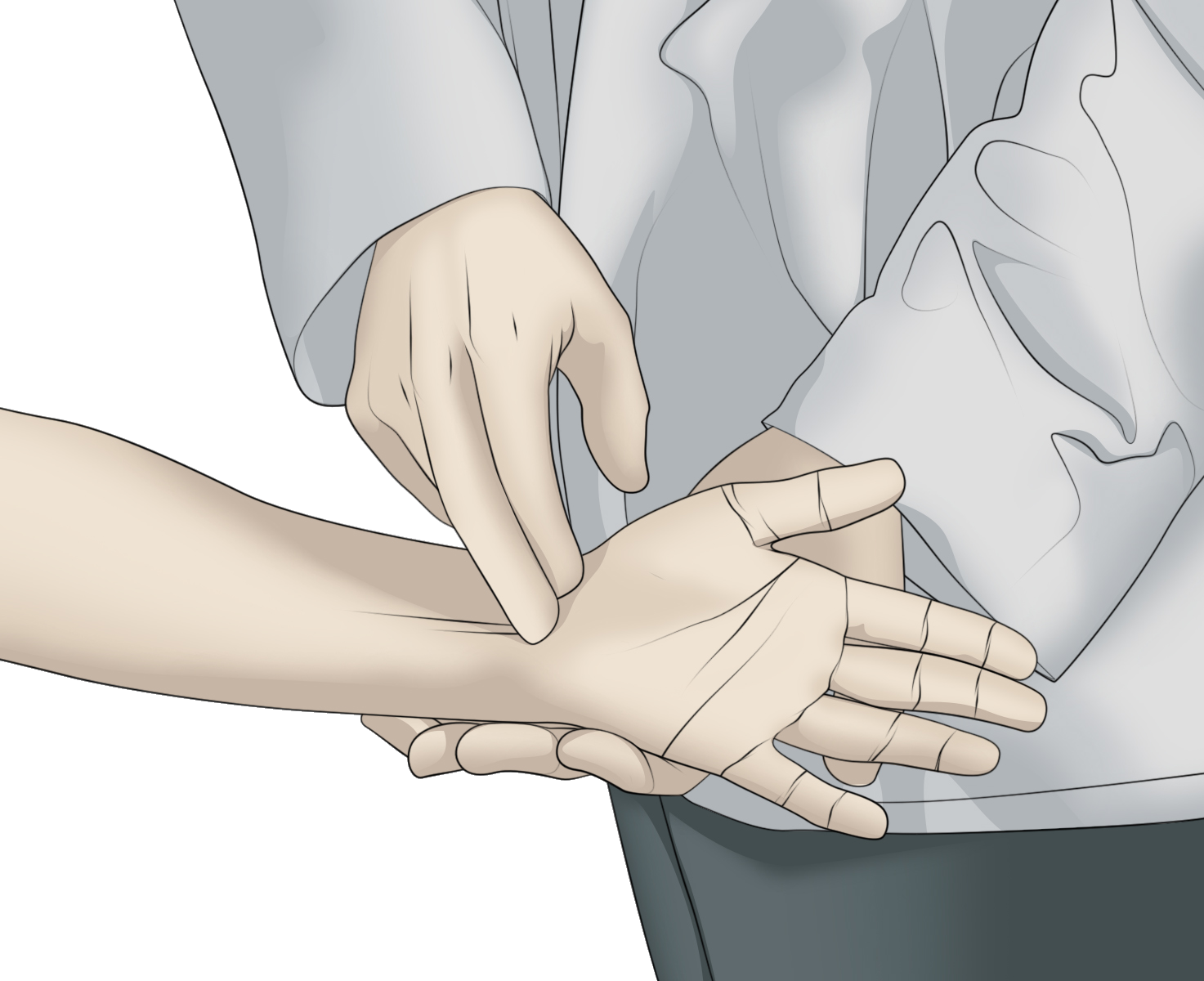
Compression of the wrist in the projection of the median nerve causes a feeling of numbness or pain in the I – III and half of the IV fingers.
Phalen's test
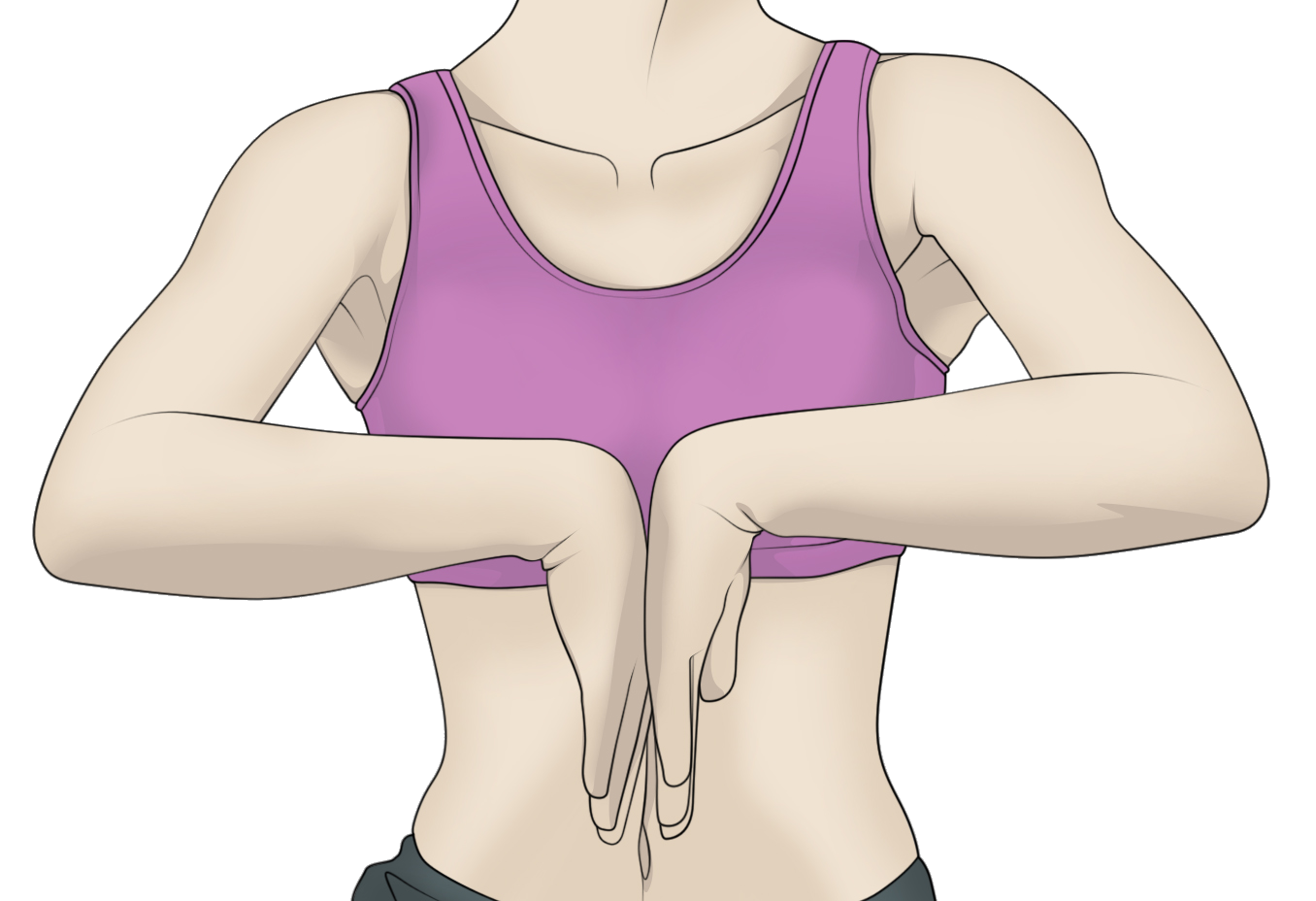
Flexion of the hands 90 ° as shown in the figure causes numbness, tingling sensation or pain in fingers I – III and half of IV of the affected hand in less than 60 seconds. In a healthy person, similar sensations can also develop, however, firstly, they are less pronounced, and secondly, they appear only after a minute or more.
Opposition trial
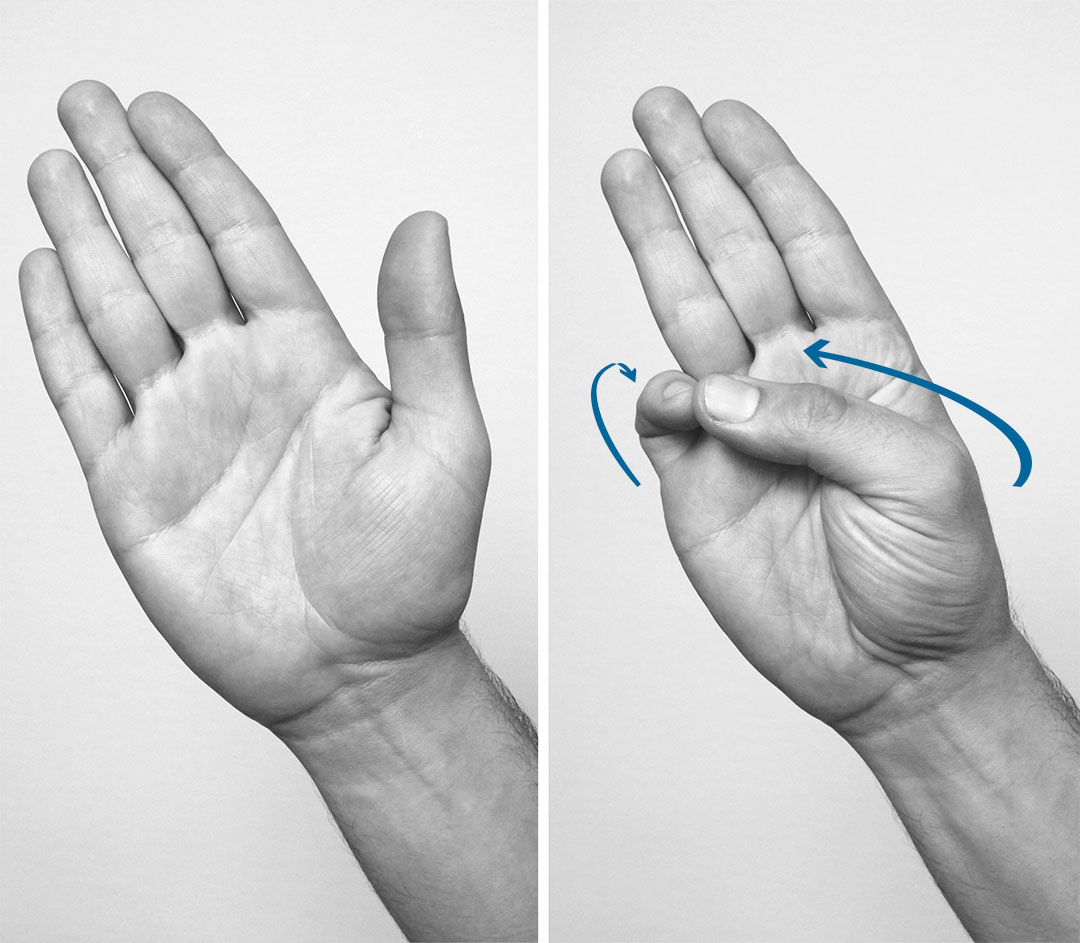
You will need a companion for this test. Connect the tips of your thumb and pinky finger, and then ask someone to open the resulting ring. In the advanced stages of carpal tunnel syndrome, your helper can easily do this. If you did not manage to close your fingers at all, we recommend that you consult a doctor as soon as possible - this indicates a serious violation of the innervation of the muscles of the hand.
Prevention of carpal tunnel syndrome
| !
, . , , , , . , , , , ( ) ( ). ( ) , . |
The basic methods of prevention of carpal tunnel syndrome are reduced to unloading the ligaments, tendons and muscles of the arm by giving it the most physiological position. So that you better understand what you should strive for, we will conduct a practical educational program on anatomy.
Stand in front of a mirror, lower your hands at the seams and relax your muscles as much as possible. Pay attention to what position your hands are in: palms will look towards the hips, at a slight angle.

Now bend one arm at the elbow 90 °. Your hand is now in a neutral position . From this position, you can turn it with your palm up (that is, supination of the forearm) or downward ( pronate the forearm). To remember these names, you can use a simple mnemonic rule known to every senior student of a medical university: "The SOUP carried - PRO lila." When you are carrying a plate of SOUP a, your hand of the SOUP is initiated, that is, with the palm facing up. But if you make a PROnation, turning your hand palm down, then ABM pour the contents of the plate.
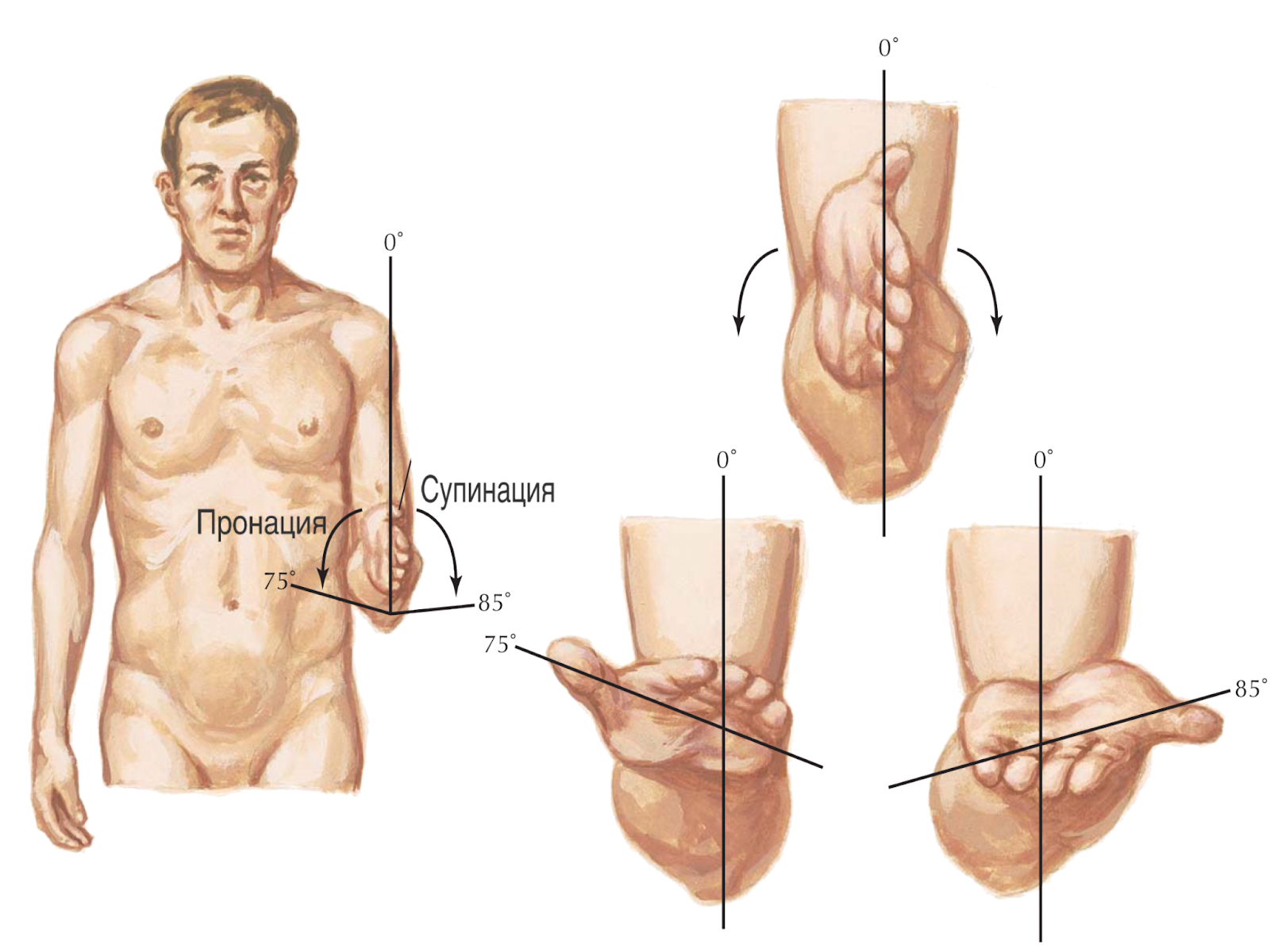
When you use a computer mouse, your forearm is constantly in a state of pronation. The round pronator of the shoulder (musculus pronator teres) and the square pronator of the shoulder (musculus pronator quadratus) are responsible for pronation. During their contraction, the ulna and radius intersect, the carpal tunnel narrows, and the tendons passing through it stretch and shift, squeezing the median nerve.

The situation is further aggravated by the incorrect position of the hand on the mouse body: excessive palmar flexion or dorsal hyperextension in the wrist joint, as well as elbow (outward abduction) and radial (inward abduction) deviation of the hand only increase the compression of the nerve trunk. Hence follows the first, most simple recommendation.
1. The hand and forearm should lie on the same line both horizontally and vertically.
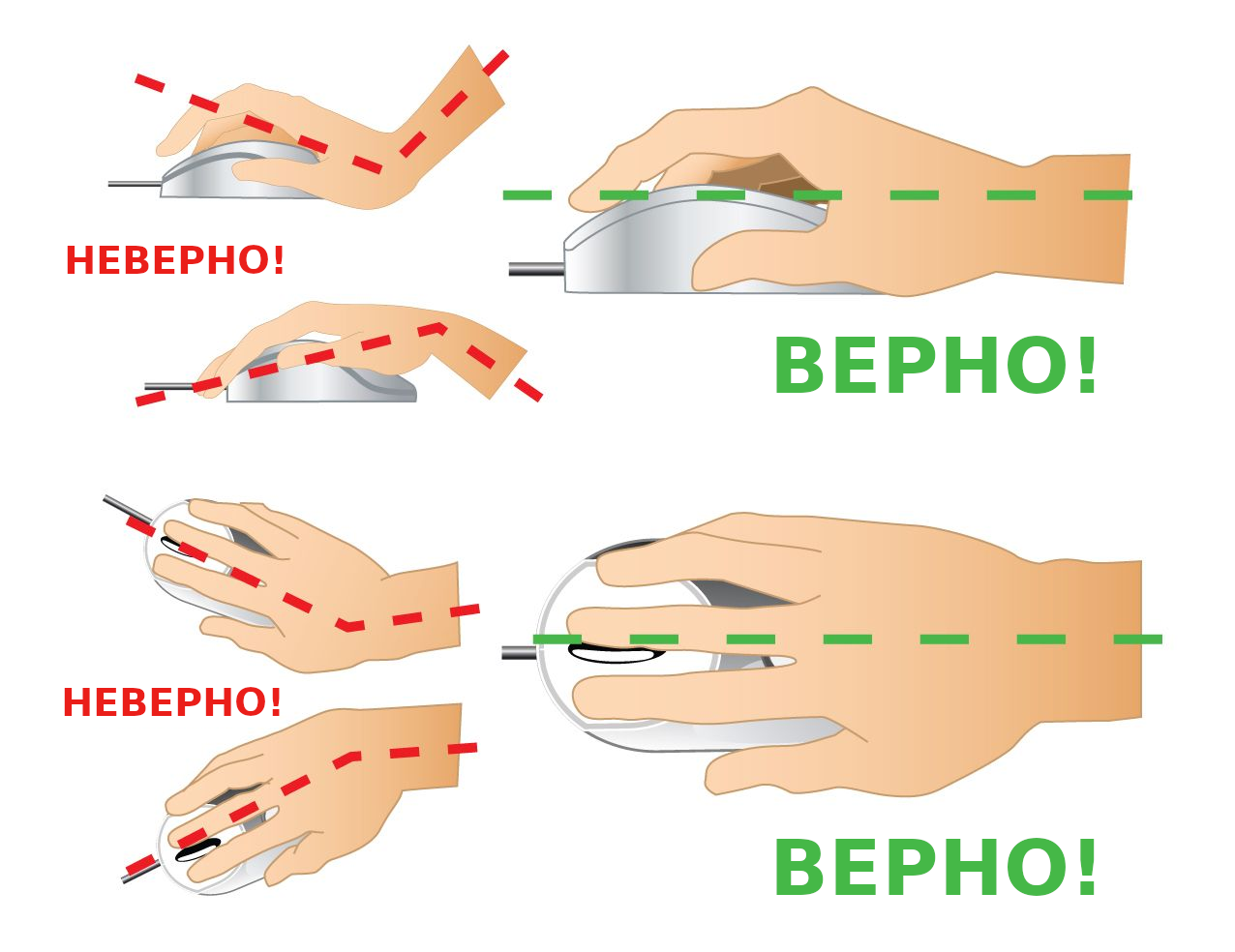
The most radical (and expensive) method of solving this problem is buying ergonomic furniture or making a custom-made table and computer chair in accordance with your anthropometric data. A more affordable and versatile way is to purchase a special armrest for working with a mouse.
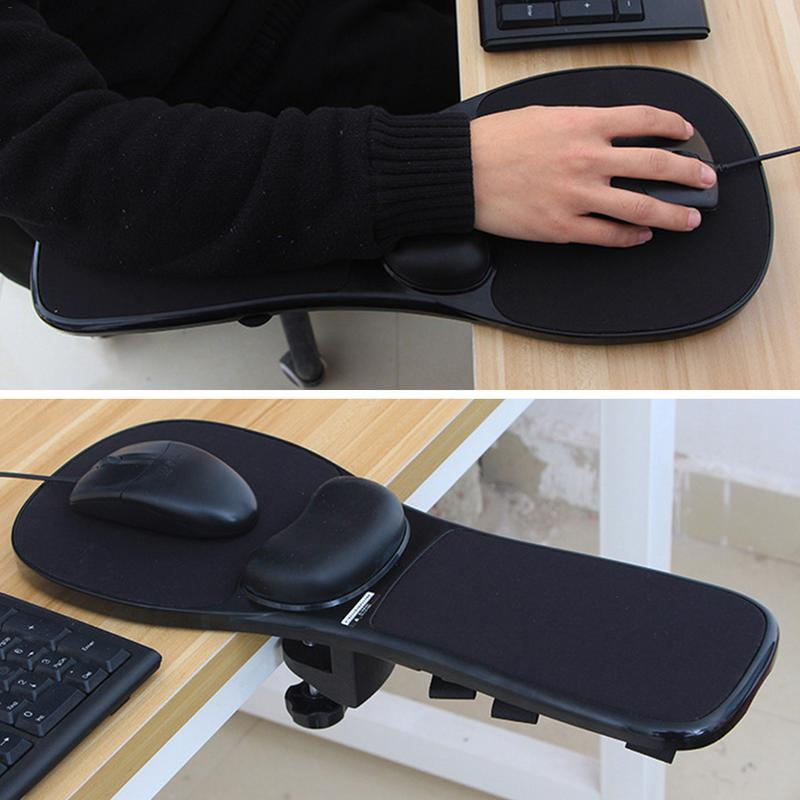
This device provides effective support for the forearm and hand, while it can be attached to a tabletop or to the armrest of an office chair. There are also special mats with gel pads, but they are not as effective as they do not provide support for the forearm itself. Therefore, it is advisable to use them only if your workplace is already properly equipped and your elbow does not hang below the level of the table top.
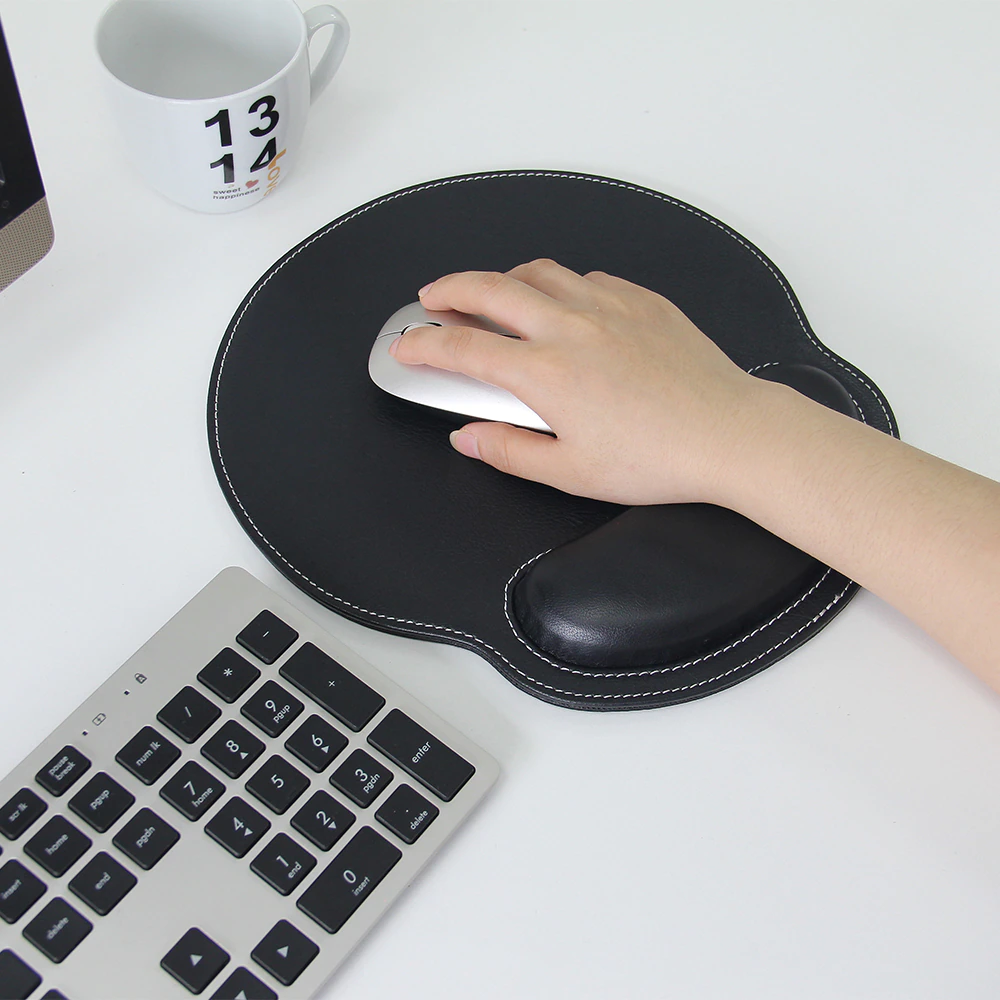
With the "straightening of the arms" sorted out. However, to achieve maximum effect, there is another important rule to follow.
2. Hands should be in a neutral position.
This can be achieved with ergonomic input devices that help reduce pronation. These include, first of all, vertical mice.

The modern market offers a huge number of such devices for every taste and wallet. The most widespread are models that resemble shark fin (variations on the Logitech MX Vertical theme), but there are also much more exotic modifications, more like classic joysticks.

Which device to choose depends purely on your personal preferences. The main thing is that the mouse ensures the natural position of the hand, so that the palm is located on the edge, almost vertically.
Trackballs also contribute to unloading the wrist, but only the "correct" ones. No matter what the manufacturers say, moving the cursor with a ball in itself only helps to avoid microtrauma and compression of the median nerve caused by ulnar and radial deviations of the hand in the horizontal plane, which are inevitable when working with a classic mouse. However, most of these devices, like the Logitech Trackman Marble pictured below, do not solve the forearm pronation problem in any way.
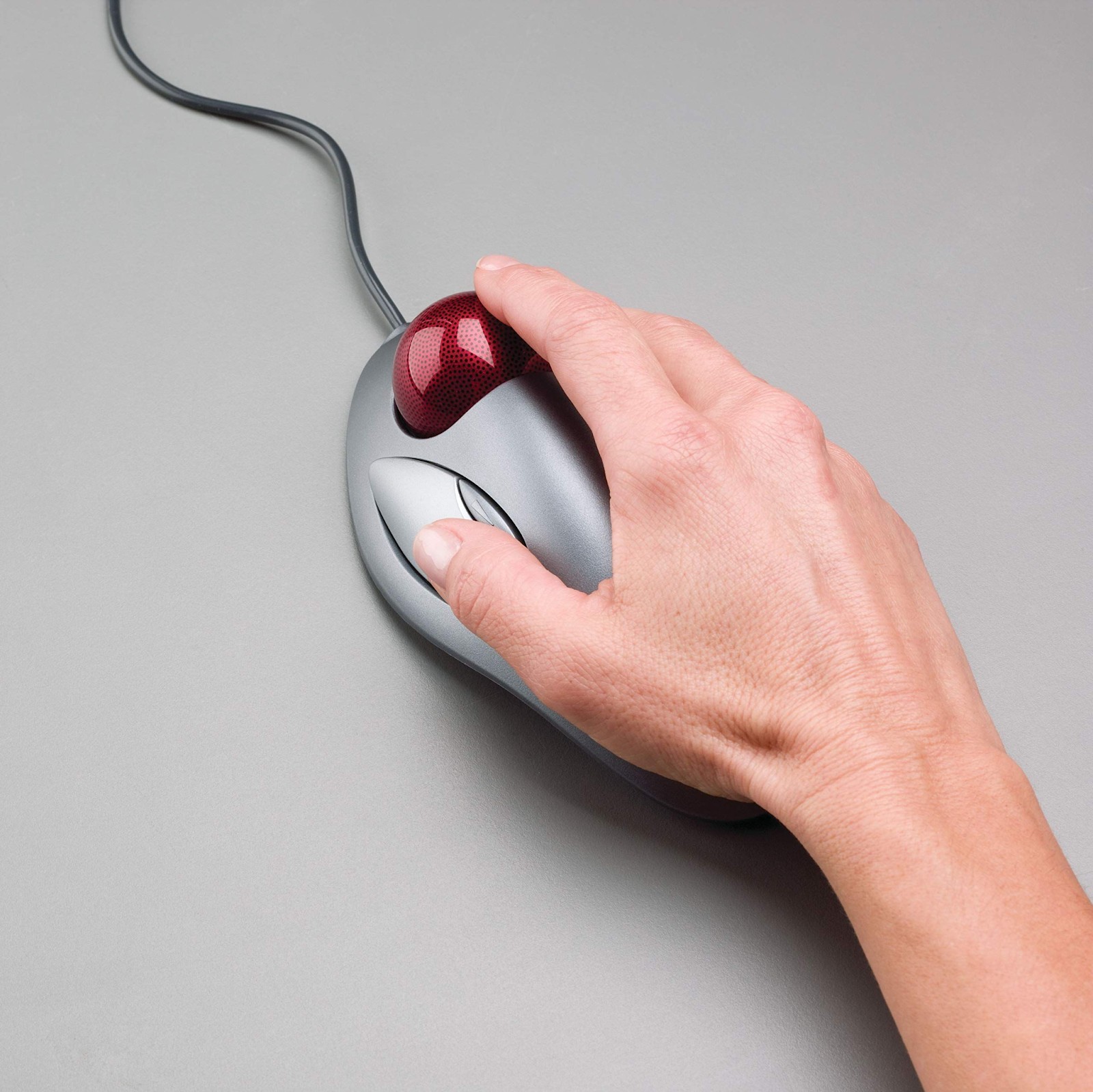
In the portfolio of the same company there is also a much more ergonomic model MX Ergo with a sloping body, which already allows you to reduce pronation and protect your wrist.
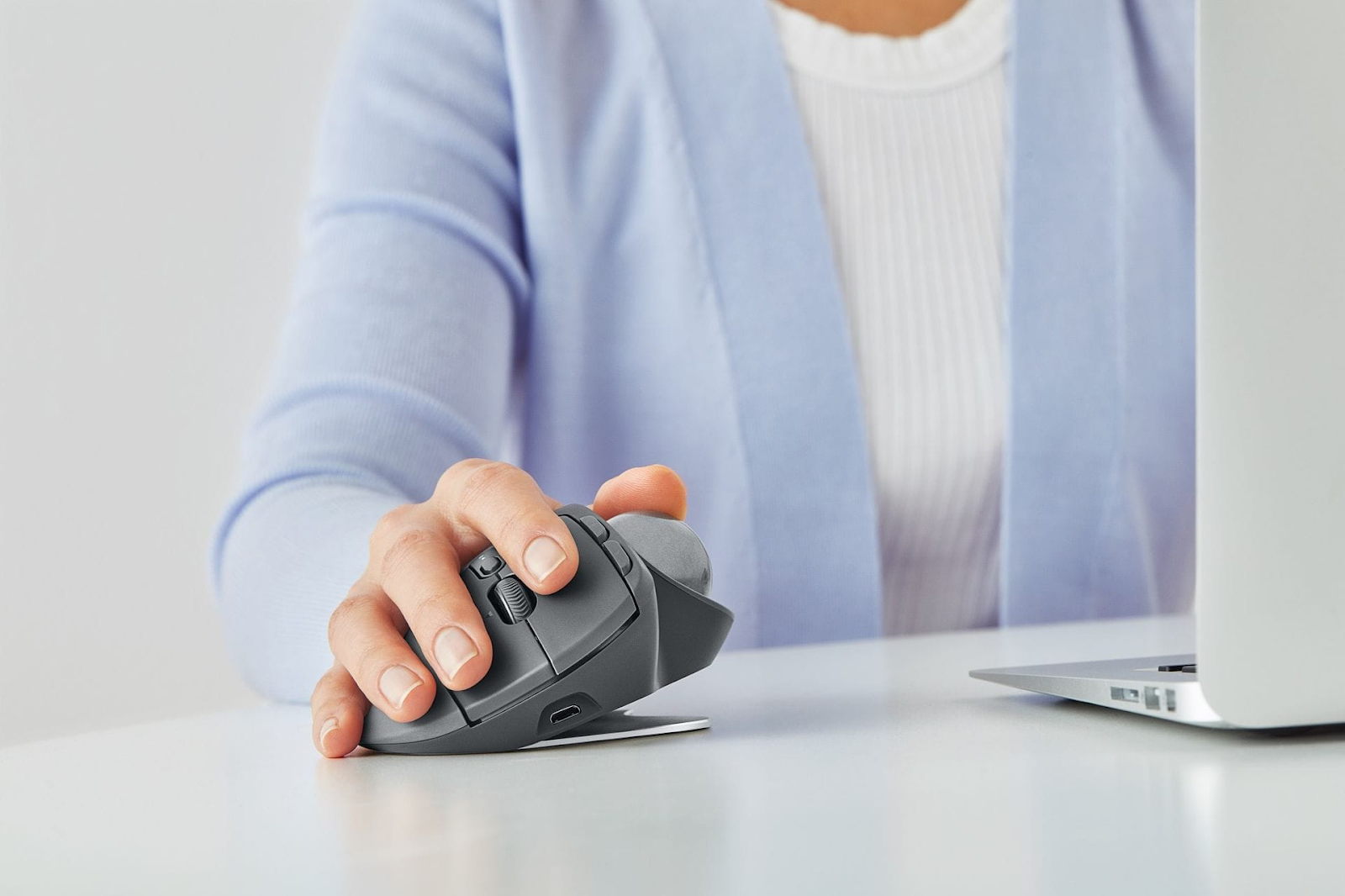
However, to achieve maximum therapeutic effect, this device should be used with an additional stand that increases the tilt angle of the trackball.
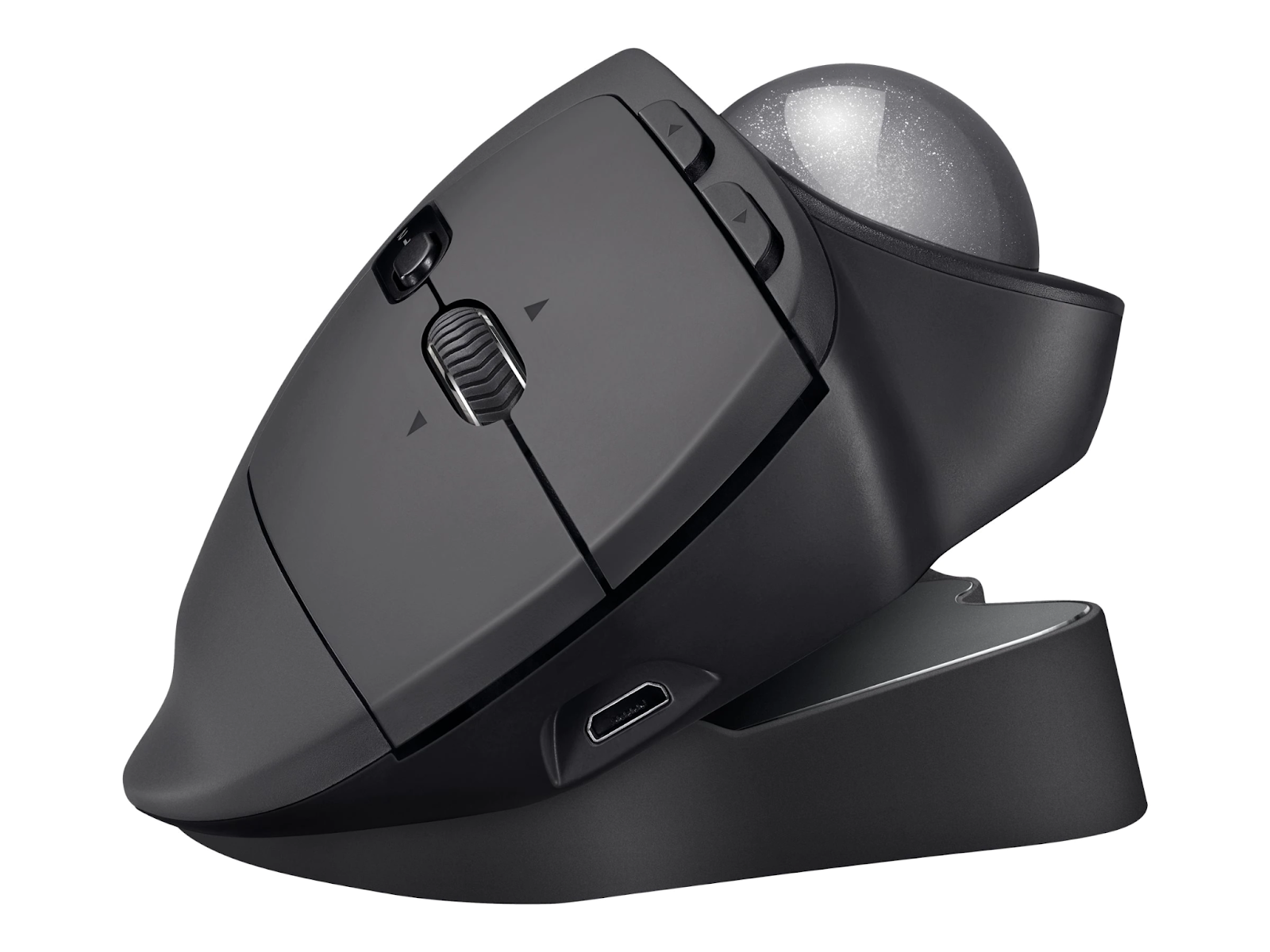
With ergonomic keyboards, everything is a little more complicated: although there are many such devices, the truly ultimate solutions for the prevention of carpal tunnel syndrome can be counted on the fingers. And that's why.
Typing a code or text on a regular rectangular keyboard, we are faced with two serious problems at once: firstly, both forearms are maximally pronated, and secondly, our hands are in a state of elbow deviation, that is, they are retracted outward.
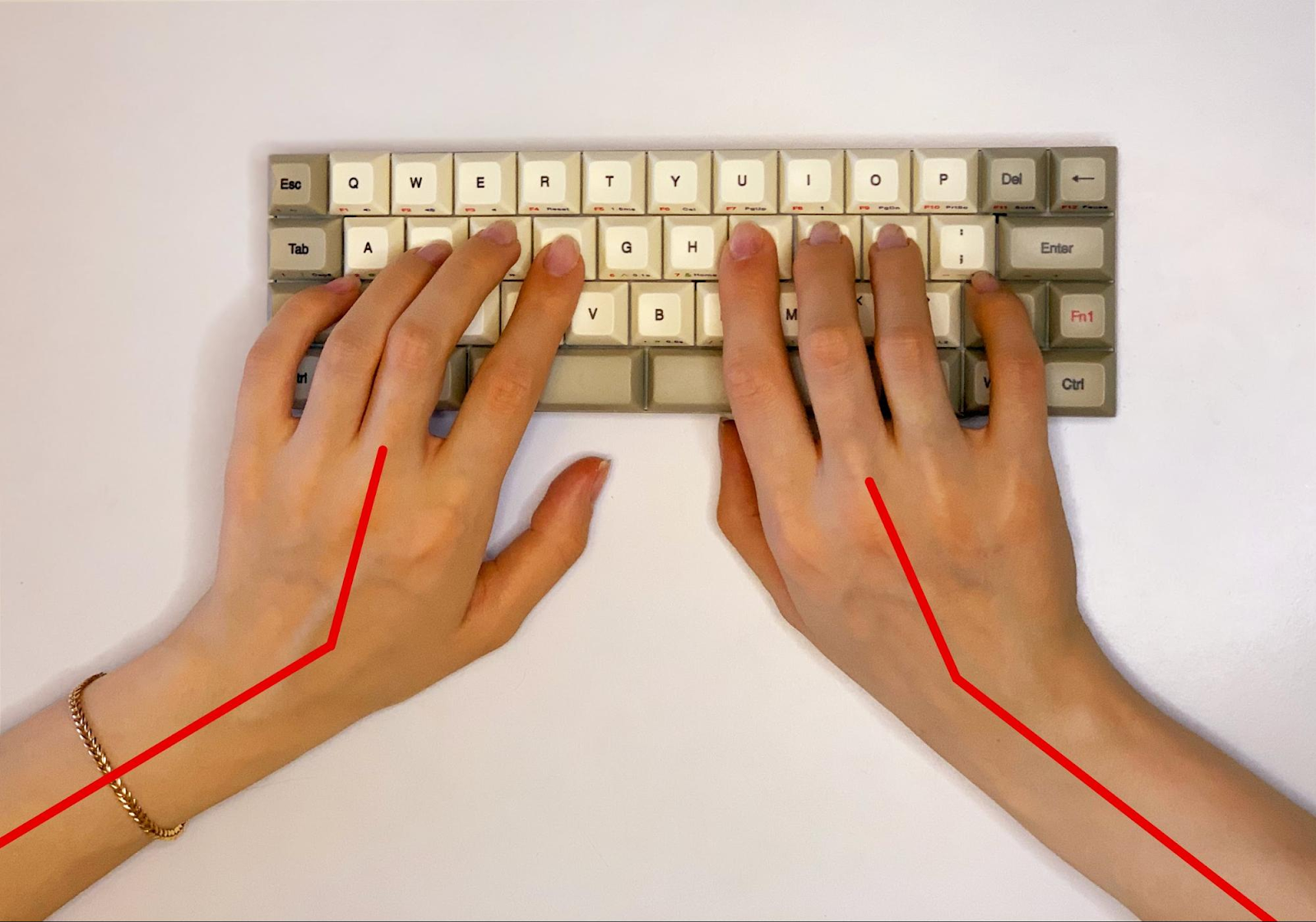
Part of the situation is improved by dividing the alphanumeric keys into two blocks located at an angle to each other. As you can see in the picture below, this topology of buttons ensures a natural position of the hands in relation to the forearms, allowing you to forget about the elbow deviation.

Since each person has unique anthropometric data, such a device is not suitable for everyone. But there is also a more radical solution - buying a keyboard consisting of two halves that can be easily positioned at the desired angle.
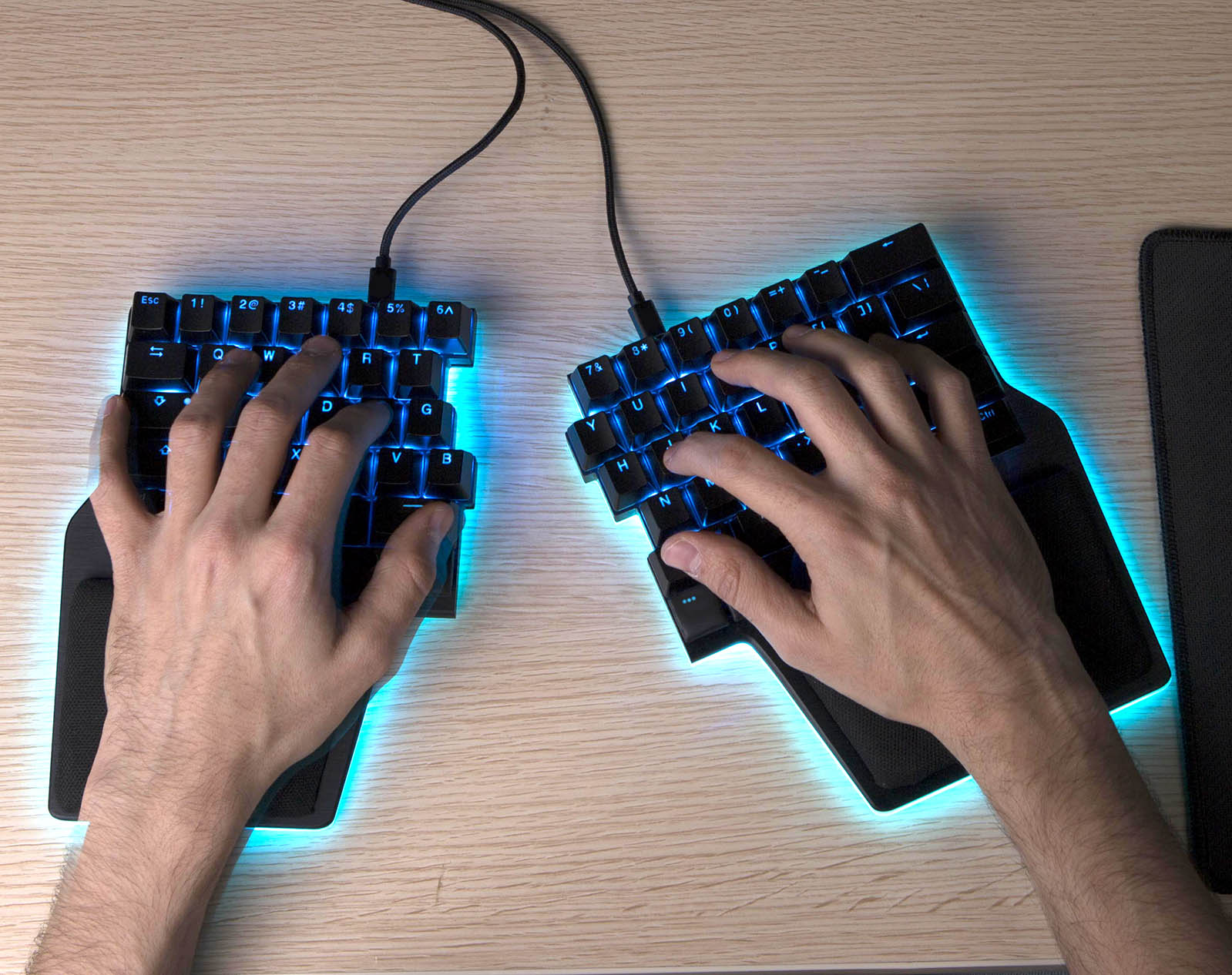
But alas, it will not work to completely get rid of pronation, because for this you have to put the button blocks almost vertically, and it will be inconvenient for you to type. However, even a 20 ° tilt will help to further relieve the wrists.
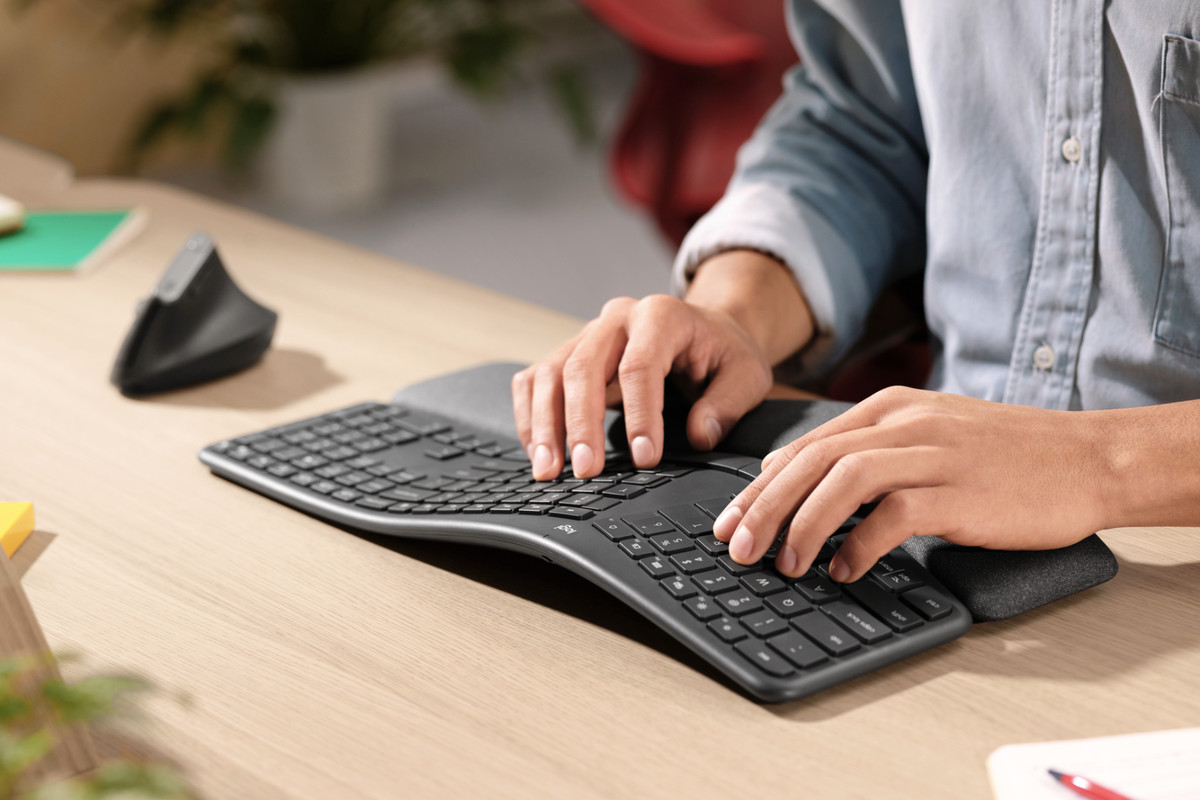
Keyboards, represented by a pair of independent modules, have an advantage here as well, as they allow flexible adjustment of the angle of inclination. However, other things being equal, such devices are much more expensive.

Now that you have pumped your workplace, it remains to pump only the hands themselves. Therefore, our third recommendation will be as follows.
3. Exercise to strengthen the muscles and tendons of the hand and forearm.
There are many myths surrounding exercise to prevent carpal tunnel syndrome. Unfortunately, most "Internet experts" offer a kind of vinaigrette of various exercise therapy techniques aimed at the rehabilitation of patients who have suffered serious injuries of the hand, wrist joint or forearm, as well as frankly harmful advice in the style of "crunch your fingers and say goodbye to the cartilage of the joints of the phalanges." In addition, would-be advisers position such exercises not at all as a means of prevention, but as a method of treating carpal tunnel syndrome, which is outright sabotage.
| !
, , . , , . 
|
But what will really help to avoid the development of carpal tunnel syndrome? The correct answer is any exercises aimed at increasing grip strength, because they are the ones who most fully use the muscles of the hand and forearm during training. It is almost impossible to work out some general recommendations that are suitable for everyone: everything will depend on the level of your physical fitness. However, there are at least 5 simple and affordable exercises that can help strengthen your hand and forearm on a regular basis.
1. Squeezing the expander
The simplest exercise that can be performed even in the workplace. For the prevention of carpal tunnel syndrome, even the cheapest ring expander made of rubber (in common parlance "donut") is suitable. As for the load, we recommend purchasing an expander that you can “close” (that is, squeeze it all the way) at least 10 times in a row.

2. Finger Extension with an Elastic Band
Another simple exercise that you can do whenever you feel that your hand is tired and needs to be warmed up. Just put a special fitness rubber band on your fingers (usually they are sold in several pieces of different stiffness, so there will be no problems with the choice of load) and try to fully open your palm.

3. Flexion of the hand with weights The
exercise consists in flexing the wrist joint at different angles with additional weights, which can be dumbbells or a barbell. Flexion movements must be performed in full amplitude. It is performed with both upper and lower grip.
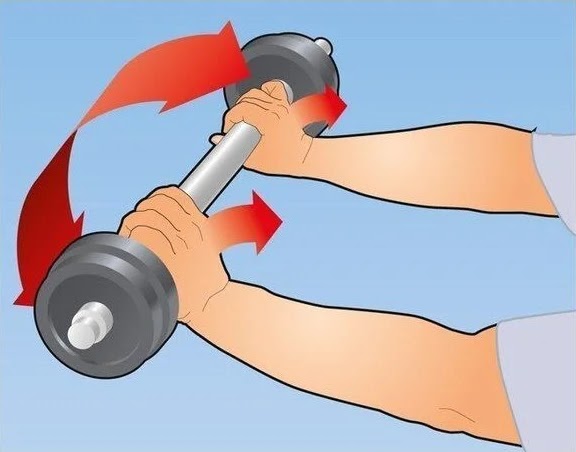
4. Rotation with a weighted brush
During this exercise, you need to take a dumbbell in your hand and rotate the brush in clockwise and counterclockwise directions.
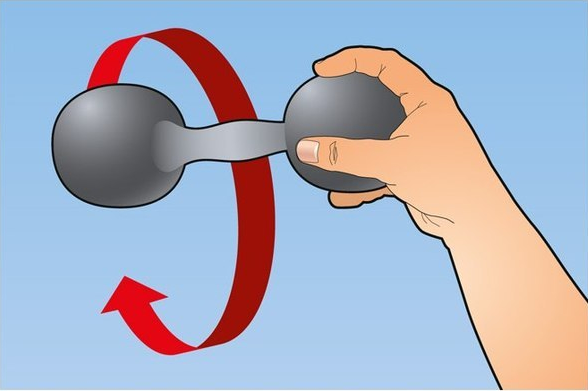
5. Working with a roller A
roller is a handle with a weight suspended from it on a flexible cable. The essence of the exercise is to gradually wind the cable around the handle, while the hands must be held outstretched in front of you and work exclusively with the brushes. It is performed with both upper and lower grip.

There are also more complex exercises, such as push-ups on the fingers, pull-ups on towels or holding the "silver bullet" (when the trainee holds a torsion expander in his outstretched hand, while clamping a sports equipment between its handles, shaped like a bullet, to which a load is suspended) however, they are all designed for well-trained people. If you devote enough time to training (preferably under the supervision of a professional instructor), you will definitely be able to master them. For the prevention of carpal tunnel syndrome, at first, the five listed are quite enough.
Cloud servers from Macleod are fast and secure.
Register using the link above or by clicking on the banner and get a 10% discount for the first month of renting a server of any configuration!
